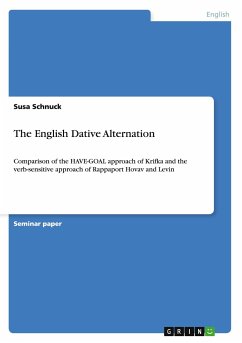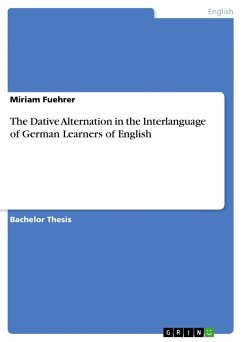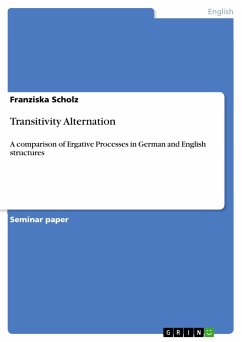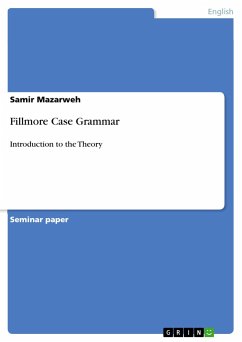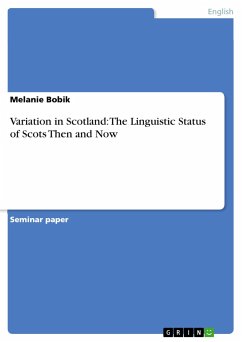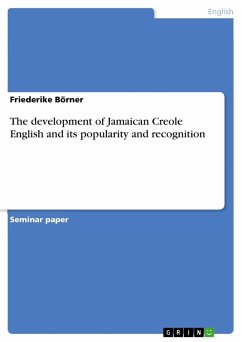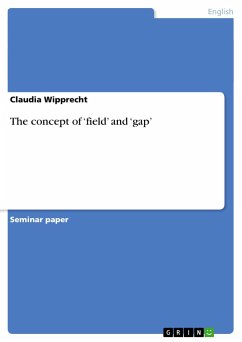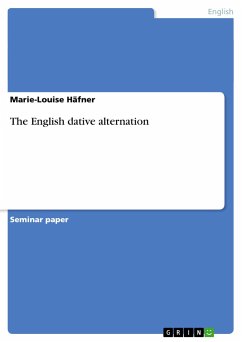
The English dative alternation

PAYBACK Punkte
0 °P sammeln!
Seminar paper from the year 2013 in the subject English Language and Literature Studies - Linguistics, grade: 1,7, Humboldt-University of Berlin (Anglistik), language: English, abstract: Most speakers of English are unconsciously proficient in combining all kinds of information in order to form the grammatical structure they use for language production.In this essay I attempt to describe one of these complex structures linguistically, namely the nature of dative verbs. Understanding the syntactic patterns of the verb is a challenging task - not only for the acquisition of English as a second l...
Seminar paper from the year 2013 in the subject English Language and Literature Studies - Linguistics, grade: 1,7, Humboldt-University of Berlin (Anglistik), language: English, abstract: Most speakers of English are unconsciously proficient in combining all kinds of information in order to form the grammatical structure they use for language production.In this essay I attempt to describe one of these complex structures linguistically, namely the nature of dative verbs. Understanding the syntactic patterns of the verb is a challenging task - not only for the acquisition of English as a second language, but for linguistic research just as much. We're occupied with transitive verbs that take more than one internal argument.There is a great number of alternations in English grammar which do not involve a change in the transitivity of the verb (Levin 1993), one of them being the Dative Alternation, which will be the topic of this essay.I will begin by introducing some general findings of research in this field whereupon a list of verbs will follow which presents groups of verbs that do or do not perform the alternation. At the core of my dissertation I will compare two different approaches on the subject, namely the works of Manfred Krifka and Rappaport Hovav & Levin. They represent two sites of the debate concerning the semantics of the dative alternation. Whilst the former defends the so-called polysemy view, the latter are enthusiastic for the single meaning approach. I will go into more detail in section 4. In the final analysis I'm going to introduce a brief study of the dative alternation in different variants of English, namely British, Australian and American English.




